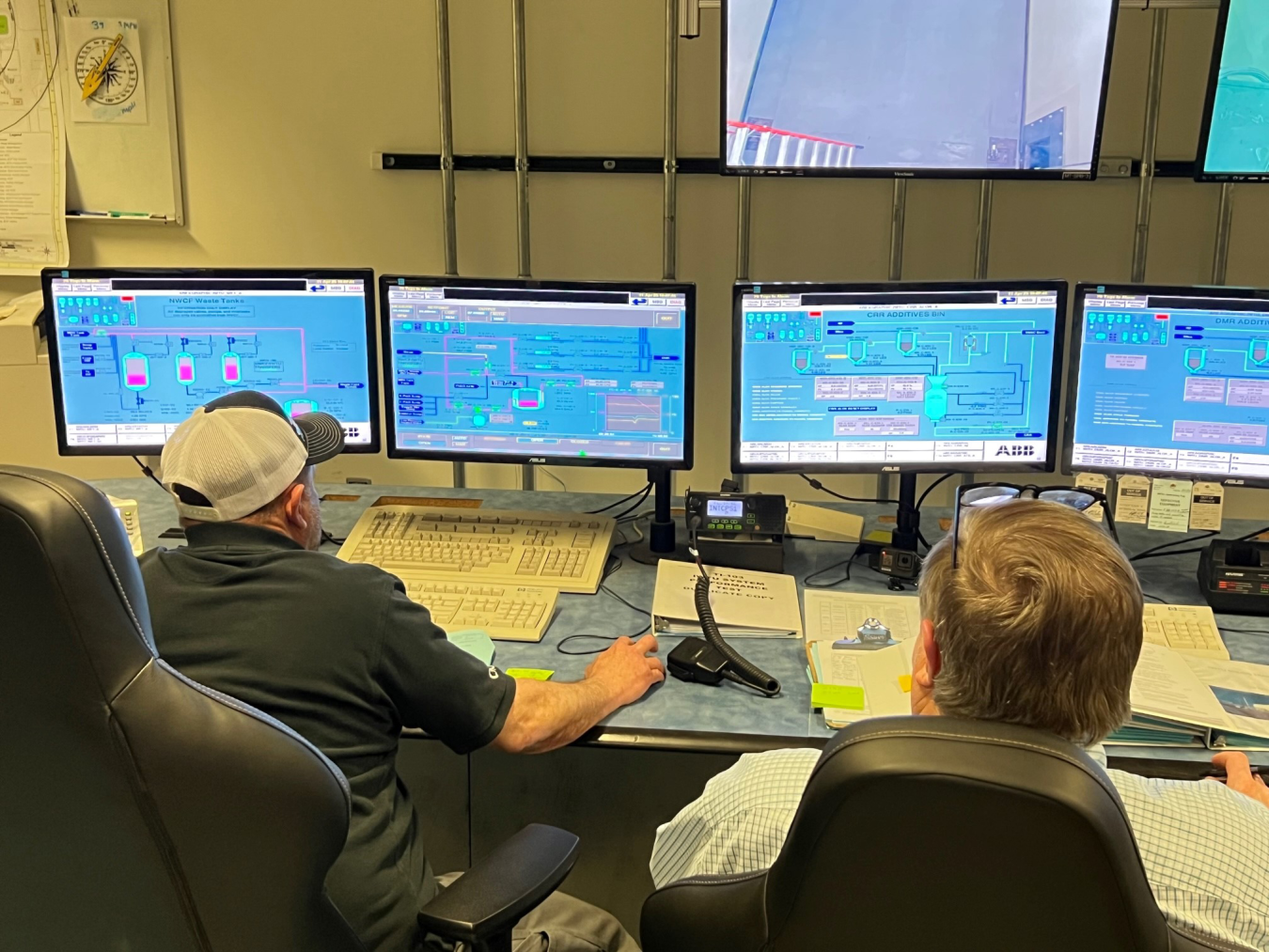Since the launch of operations just over a month ago, the Integrated Waste Treatment Unit (IWTU) has increased sodium-bearing waste treatment fivefold, a crucial step in removing remaining liquid waste from nearby underground tanks.
Office of Environmental Management
May 16, 2023EM management, Integrated Waste Treatment Unit employees and others signed the first stainless steel canister prior to crews filling it with sodium-bearing waste and simulant. Once filled, that canister and 15 others were placed in a concrete vault for storage.
IDAHO FALLS, Idaho – Since the launch of operations just over a month ago, the Integrated Waste Treatment Unit (IWTU) has increased sodium-bearing waste treatment fivefold, a crucial step in removing remaining liquid waste from nearby underground tanks at the Idaho National Laboratory (INL) Site and protecting the underlying Snake River Plain Aquifer.
To date, the facility has converted more than 8,550 gallons of the liquid tank waste to a more stable, granular solid.
On April 11, IWTU began treating a blend that was 10% sodium-bearing waste and 90% non-radioactive simulated waste, or simulant, which had been essential to IWTU testing from 2012 to 2023.
That day, EM Senior Advisor William “Ike” White, EM Idaho Cleanup Project Manager Connie Flohr and other officials congratulated the federal and contractor staff for reaching the crucial milestone and praised them for carrying through on a commitment EM and the workforce made to the state of Idaho and its citizens.
IWTU employees also shared a sense of achievement over the facility's launch, saying it was rewarding to see their hard work pay off.
“It was nerve-wracking for a bit because everyone was holding their breath, but when we saw it was working, there was a collective sigh of relief and then it was like a normal day,” said engineer Allyson Ferry, who joined IWTU staff shortly out of college in 2017.
IWTU crews have since increased the treatment blend to 50% waste and 50% simulant before it eventually becomes 100% sodium-bearing waste based on the plant’s operating conditions.

Following treatment, the granulated waste is stored in stainless steel canisters — more than 40 have been filled to date — and placed within concrete vaults, each of which holds 16 canisters.
All IWTU monitoring data is shared with the Idaho Department of Environmental Quality as part of the facility’s operating permit requirements. Later, IWTU crews will initiate a system performance test to demonstrate compliance with established performance standards and determine adequate operating conditions under the permit.
About 900,000 gallons of liquid waste was generated during decontamination activities following historic spent nuclear fuel reprocessing runs at the Idaho Nuclear Technology and Engineering Center, an activity that ended at the INL Site in 1992.
The treated waste will remain onsite until a permanent disposal site becomes available.
To receive the latest news and updates about the Office of Environmental Management, submit your e-mail address.

